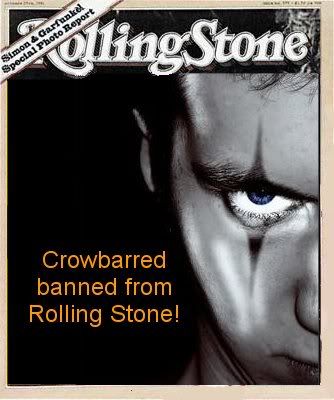Number 573 - Danny & The Juniors

.
Genre:Rock n Roll
art by catolove
Neil Young said, "Rock and Roll will never die" on Rust Never Sleeps, however, Kurt Cobain thought it was better to "Burn out than fade away" from the same song, so he wrote in his alleged "suicide note".
Neil believed Rock n Roll would be strong enough to ride out the fads in music, like rap & hip hop and other genres. Kurt misinterpreted the lyrics completely.
Neil was right, Rock & Roll will survive and it will never be forgotten. True, it may never be that way again, but then what is? We all grow old and so does the sounds of our youth, yes, we scratch our heads when we hear thrash metal and yes, rap artists swearing every 2nd word in a a chorus we cant hum, or even whistle.
Neil was right, but Kurt was wrong, but theres no denying Kurt's influence on Rock N Roll, at least for the big picture anyway.
Danny & the Juniors shot straight to the top of the charts in early 1958 with their biggest hit ever, the gold-selling "At the Hop" (penned by the songwriting team of Dave White and John Madara), though they reached the charts again with eight more singles through 1963, notably the Top 40 charters "Rock and Roll Is Here to Stay," "Dottie," and "Twistin' U.S.A.". Danny Rapp (lead tenor), Frank Maffei (second tenor), Joe Terranova (baritone/bass), and Dave White Tricker (tenor) (aka Dave White) were four Philadelphia high school friends -- all were born in 1940 or 1941 -- who formed an atypical late-'50s rock & roll dance combo, originally calling themselves the Juvenairs. Rapp -- the group's leader -- choreographed their dance steps and invented the routines that they performed during their sets. After playing after-school gigs and local shows as a foursome for a while, they later added saxophonist Lennie Baker to the lineup.
Singer auditioned the band and liked an original song White had written that captured the energetic spirit of rock & roll. It was called "Do the Bop." However, since the term "bop" was by then already out of fashion, he suggested that the song's title needed to be changed and helped them shape it into the hit we know today: "At the Hop." Singer also shortened the name of the group from the Juvenairs to the Juniors and had them cut a demo of "At the Hop" that he took around to play for local DJs. Working with producer Leon Huff, it took 13 takes in Reco-Art Studios in Philadelphia before Singer felt he had the goods from the group.
 Singer played the song for Dick Clark, whose popular music show American Bandstand was broadcast live from their hometown of Philadelphia. Clark didn't have any immediate openings on the show, but as luck would have it, Little Anthony and the Imperials canceled an appearance soon thereafter and Clark asked Danny & the Juniors to fill in as replacements. "At the Hop" proved to be an immediate success. Singular quickly issued the song as the group's first single and it became a regional hit, selling 7,000 copies in onw week in Philadelphia alone. Financially strapped, Singular Records later leased the record for 5,000 dollars to ABC Paramount. "At the Hop" proceeded to climb up the charts in December of 1957, reaching number one, where it remained for seven weeks.
Singer played the song for Dick Clark, whose popular music show American Bandstand was broadcast live from their hometown of Philadelphia. Clark didn't have any immediate openings on the show, but as luck would have it, Little Anthony and the Imperials canceled an appearance soon thereafter and Clark asked Danny & the Juniors to fill in as replacements. "At the Hop" proved to be an immediate success. Singular quickly issued the song as the group's first single and it became a regional hit, selling 7,000 copies in onw week in Philadelphia alone. Financially strapped, Singular Records later leased the record for 5,000 dollars to ABC Paramount. "At the Hop" proceeded to climb up the charts in December of 1957, reaching number one, where it remained for seven weeks. Danny & the Juniors soon followed up with "Rock and Roll Is Here to Stay," another White-penned rocker, which also made the Top 20. The group toured with several of Alan Freed's traveling rock & roll shows and put two more songs into the Top 40. In the early '60s the group switched over to the Swan label and after their last song charted in 1963, Danny & the Juniors eventually parted ways. Madara ended up running his own record store, located at 60th and Market Streets in Philly. He and White also went on to join the Spokesmen, whose minor hit "The Dawn of Correction" was an answer song to Barry McGuire's number one charter, "Eve of Destruction." White also made a solo album for Bell Records, which was released in 1971 under the name David White Tricker. Lead vocalist Danny Rapp committed suicide in 1983. Saxophonist Lennie Baker went on to be a founding member of nostalgia act Sha-Na-Na).
Danny & the Juniors soon followed up with "Rock and Roll Is Here to Stay," another White-penned rocker, which also made the Top 20. The group toured with several of Alan Freed's traveling rock & roll shows and put two more songs into the Top 40. In the early '60s the group switched over to the Swan label and after their last song charted in 1963, Danny & the Juniors eventually parted ways. Madara ended up running his own record store, located at 60th and Market Streets in Philly. He and White also went on to join the Spokesmen, whose minor hit "The Dawn of Correction" was an answer song to Barry McGuire's number one charter, "Eve of Destruction." White also made a solo album for Bell Records, which was released in 1971 under the name David White Tricker. Lead vocalist Danny Rapp committed suicide in 1983. Saxophonist Lennie Baker went on to be a founding member of nostalgia act Sha-Na-Na). Interesting side notes: years later, the motion picture American Graffiti featured a scene at a senior class dance with a band playing Danny & the Juniors' "At the Hop." The '50s-style band, calling themselves "Herby & the Heartbeats," were actually portrayed by Flash Cadillac & the Continental Kids (but were virtually the spitting image of Danny & the Juniors themselves). ~ [Bryan Thomas, All Music Guide]
For Neil Young see Number 938 & Number 677
Rolling Stone Top 500 Songs ranked this song at Number (There was music before 1962?) and the Album ranked at Number (Get out of here!)
This song has a crowbarred rating of 73 out of 108 pts
Tags:Danny & The Juniors, 1958, Rock n Roll, Neil Young, Kurt Cobain, Dick Clark, Rust Never Sleeps, Alan Freed,YouTube, Music Video, Rolling Stone Magazine, Crowbarred, New Zealand, Crowbarred Unleashed, The Definitive 1000 Songs Of All Time, Mellow Mix Volume 1, Mellow Mix Volume 2, Mellow Mix Volume 3, Mellow Mix Volume 4, Mellow Mix Volume 5, Mellow Mix Volume 6, Mellow Mix Volume 7, Mellow Mix Volume 9, Mellow Mix Volume 10, Mellow Mix Volume 11, Mellow Mix Volume 12

By The Year 1955 to 2005:
1955, 1956, 1957, 1958, 1959, 1960, 1961, 1962, 1963, 1964, 1965, 1966, 1967, 1968, 1969, 1970, 1971, 1972, 1973, 1974, 1975, 1976, 1977, 1978, 1979, 1980, 1981, 1982, 1983, 1984, 1985, 1986, 1987, 1988, 1989, 1990, 1991, 1992, 1993, 1994, 1995, 1996, 1997, 1998, 1999, 2000, 2001, 2002, 2003, 2004, 2005

underlay
Labels: Danny and The Juniors



















0 Comments:
Post a Comment
<< Home